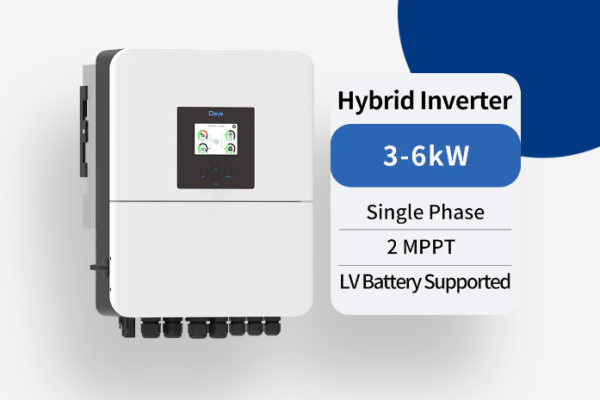Home energy storage (ESS) systems are increasingly popular as homeowners seek energy independence, cost savings, and sustainable solutions. One of the most compelling selling points that often differentiates modern home batteries from older systems is scalability.
For installers, distributors, and exporters, highlighting scalability can help clients understand flexible growth potential, long-term value, and adaptability to changing energy needs.
1. What is Scalability in Home Batteries?
Scalability refers to a system’s ability to expand capacity and/or power output by adding more battery modules or packs without replacing the entire system.
- Example: A home starts with a 5 kWh battery, and over time, two more 5 kWh modules are added to reach 15 kWh.
- The system retains the same inverter and management system, avoiding the need for a full upgrade.
Key Point: Scalability allows homeowners to match their storage system with evolving energy needs.
2. Why Scalability Matters to Homeowners
- Adaptability to Growing Energy Needs
- Household energy consumption may increase over time due to electric vehicles (EVs), new appliances, or home expansions.
- Scalable systems allow homeowners to incrementally increase capacity without replacing the original battery.
- Cost-Effective Investment
- Homeowners can start small and add capacity as budget allows.
- Reduces initial capital expenditure (CapEx) while maintaining long-term benefits.
- Future-Proofing
- Scalable systems can accommodate emerging technologies such as smart home integration, time-of-use (TOU) energy pricing, or microgrid participation.
- Ease of Maintenance and Replacement
- Faulty modules can be replaced individually instead of replacing the entire battery bank.
- Minimizes downtime and maintenance costs.
3. Scalability From a Technical Perspective
A. Modular Battery Design
- Modern ESS solutions are often modular, meaning each module has built-in BMS (Battery Management System) and connectivity.
- Modules can be connected in series or parallel depending on the desired voltage and capacity.
B. Flexible Inverter Integration
- Scalable batteries often work with hybrid or modular inverters.
- Inverters can adapt to increased battery capacity without requiring a replacement.
C. Software-Controlled Expansion
- Advanced BMS software automatically recognizes new modules, balances charge/discharge cycles, and maintains system efficiency.
Example: Adding a second module triggers automatic capacity recalibration without manual intervention.
4. Scalability as a Sales Advantage
- Tailored Solutions for Different Clients
- Small homes may start with 5–10 kWh.
- Large households or small commercial users can expand to 20–30 kWh or more.
- Highlighting ROI Potential
- Customers can calculate incremental savings from starting small and expanding, rather than investing in a large system upfront.
- Ease of Marketing to Export Markets
- Scalable systems are appealing in markets with varying grid reliability or unpredictable incentives.
- Exporters can promote flexible, modular solutions that fit multiple client scenarios.
- Competitive Differentiation
- Many older battery systems require full replacement for capacity upgrades.
- Scalable modular systems stand out in terms of flexibility and cost efficiency.
5. Use Cases Demonstrating Scalability
A. EV-Ready Homes
- Initial system: 7 kWh for basic solar storage.
- Addition: 10 kWh modules installed to cover EV charging.
- Benefits: Gradual investment, reduced upfront cost, and increased self-consumption.
B. Growing Families or Home Expansions
- Family adds a new wing with additional appliances.
- Expand battery capacity to accommodate new peak load without changing inverters.
C. Small Commercial Applications
- Offices or retail shops can start with low capacity.
- Expand storage as energy demand increases, integrating demand response programs or time-of-use tariffs.
6. Explaining Scalability to Clients
A. Visual Tools
- Show diagrams with initial setup and future expansion.
- Highlight incremental cost vs. incremental benefit.
B. Analogies
- Compare batteries to LEGO blocks: start with a few, and build larger structures as needed.
C. Practical Examples
- Calculate energy savings before and after expansion to illustrate ROI.
D. Address Client Concerns
- Will adding modules affect warranty? → Most scalable systems maintain warranty if expansion modules are from the same manufacturer.
- Will the inverter need replacement? → Modular inverters are usually compatible with added capacity.
7. Challenges and Considerations
- Compatibility
- Expansion modules must match voltage, chemistry, and BMS protocols of existing modules.
- System Design
- Proper planning ensures efficient charging and discharging after expansion.
- Physical Space
- Clients need to consider space availability for additional modules.
- Software Updates
- BMS or inverter firmware may require updates to recognize new modules.
Scalability is a strong selling point because it addresses the evolving energy needs, budget considerations, and long-term reliability of home ESS systems.
For installers, distributors, and exporters, emphasizing scalability can:
- Differentiate products in competitive markets
- Build client confidence and trust
- Maximize ROI for homeowners
- Reduce post-installation support issues
In short, scalable home batteries offer flexibility, adaptability, and a future-proof solution—qualities that resonate strongly with today’s energy-conscious clients.









